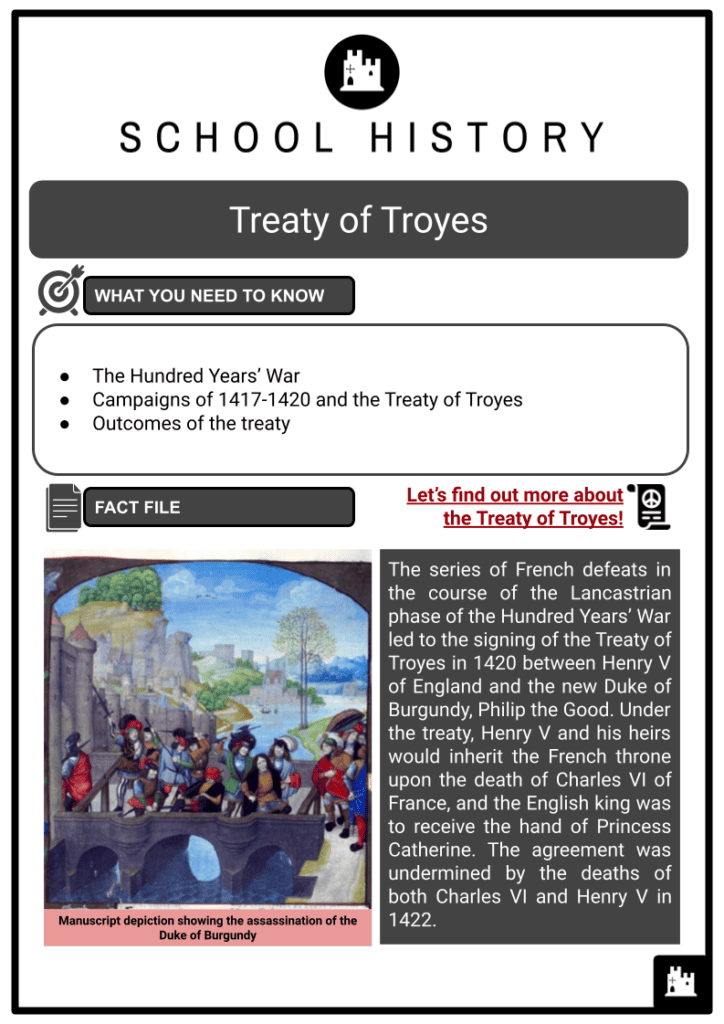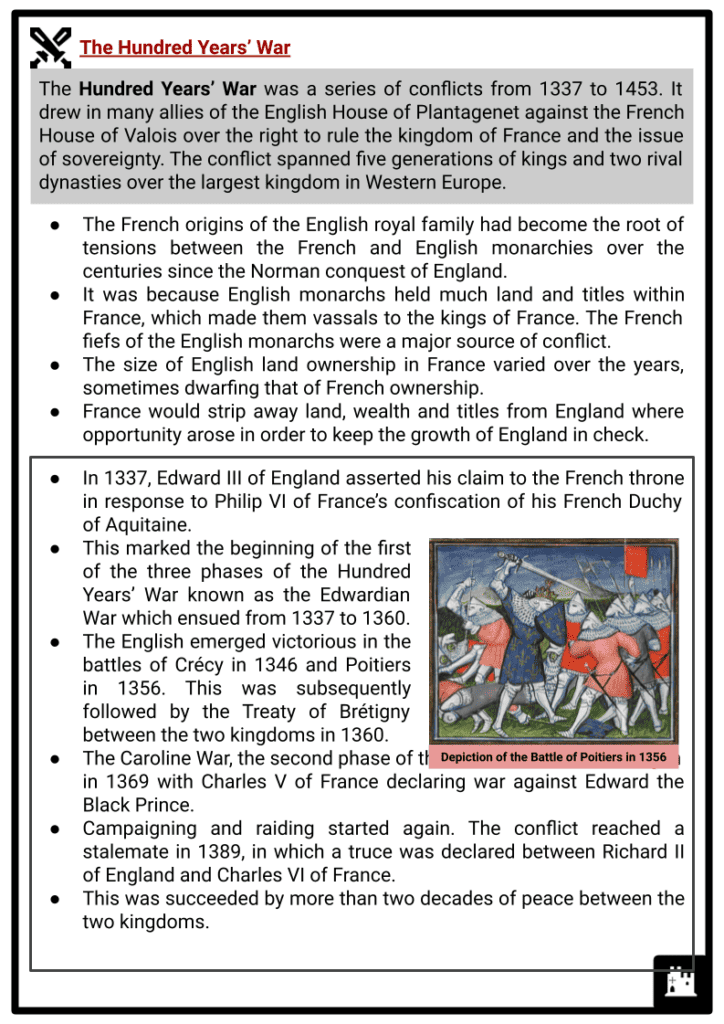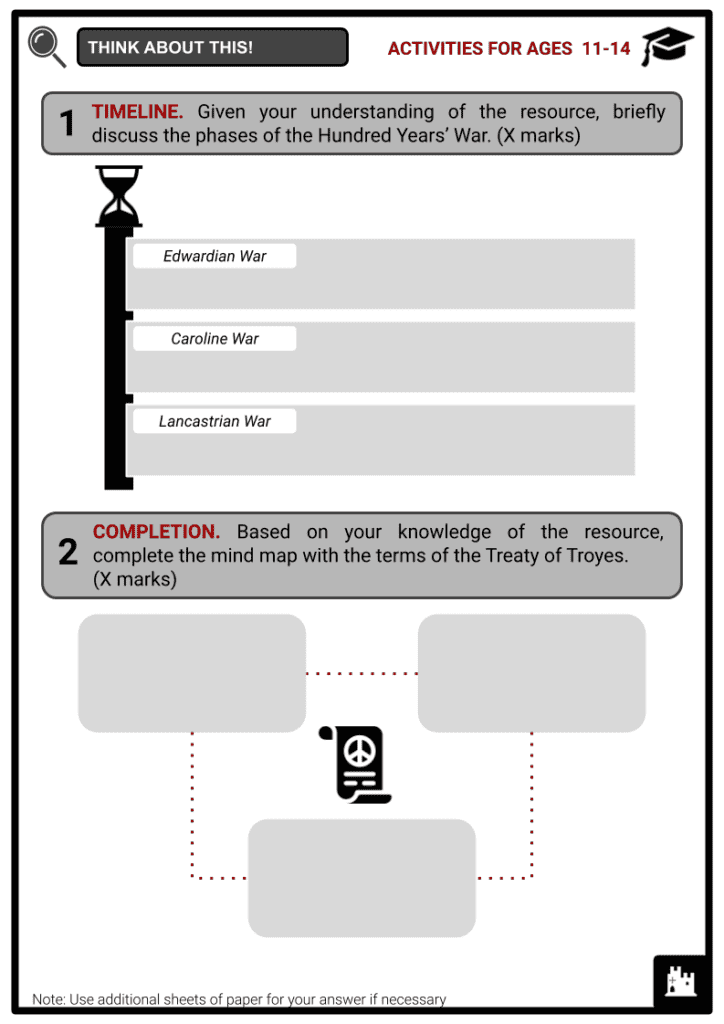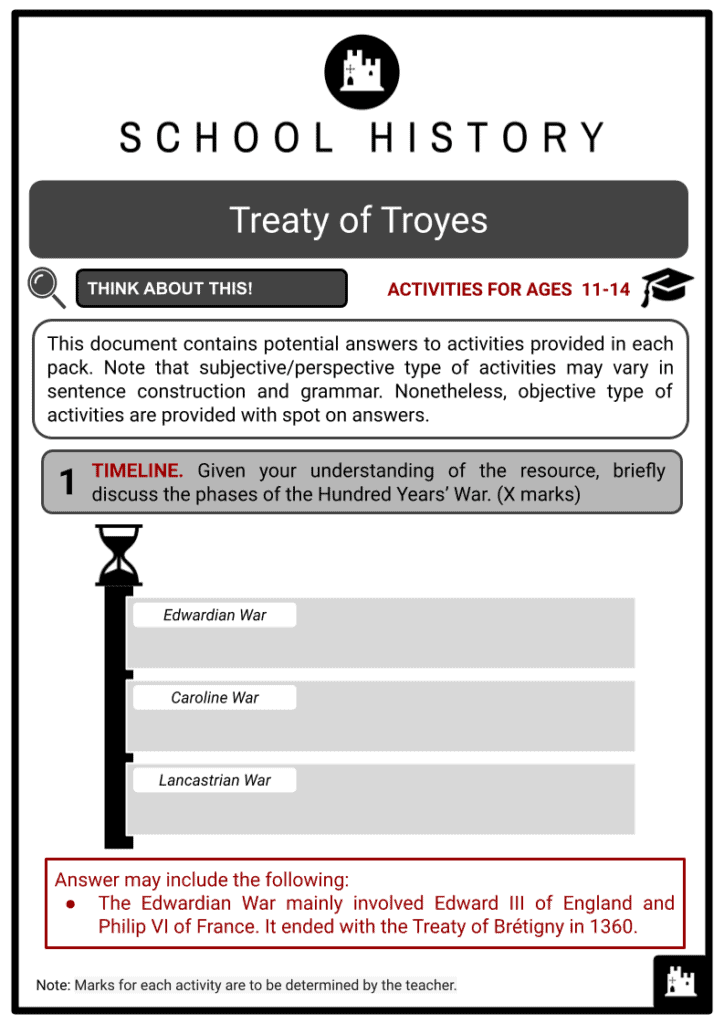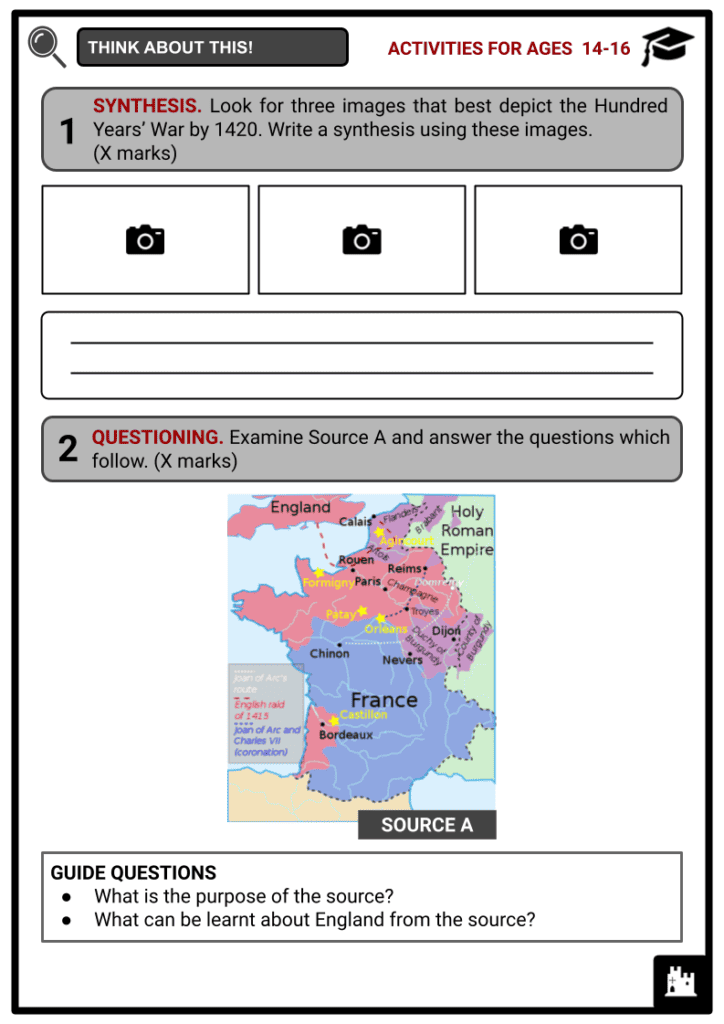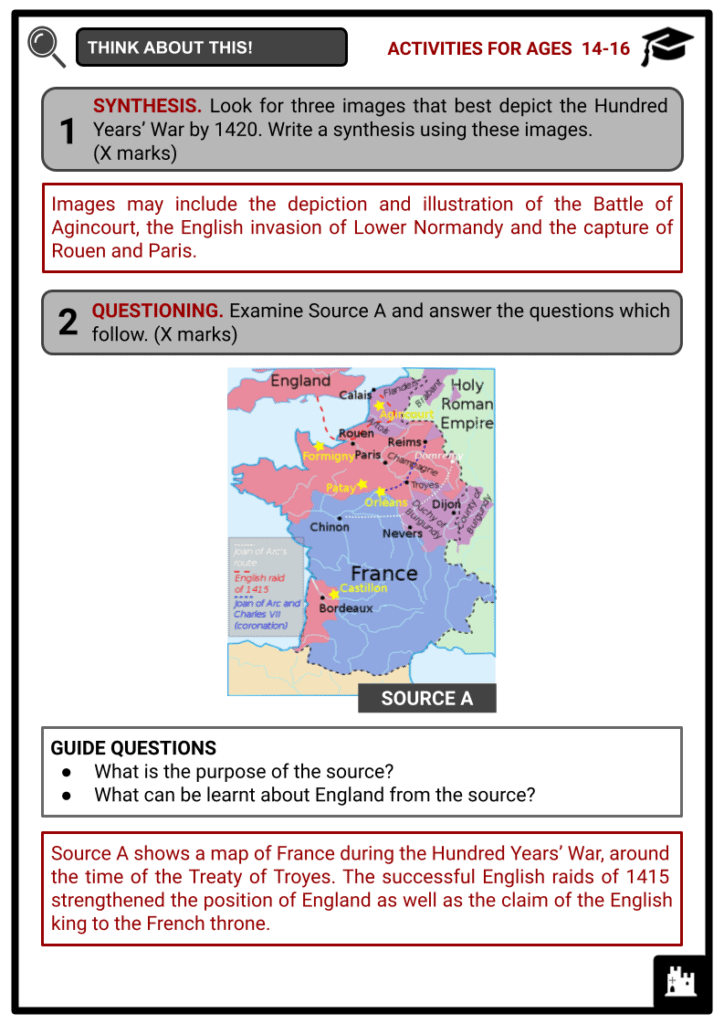Treaty of Troyes Worksheets
Do you want to save dozens of hours in time? Get your evenings and weekends back? Be able to teach about the Treaty of Troyes to your students?
Our worksheet bundle includes a fact file and printable worksheets and student activities. Perfect for both the classroom and homeschooling!
Summary
- The Hundred Years’ War
- Campaigns of 1417-1420 and the Treaty of Troyes
- Outcomes of the treaty
Key Facts And Information
Let’s find out more about the Treaty of Troyes!
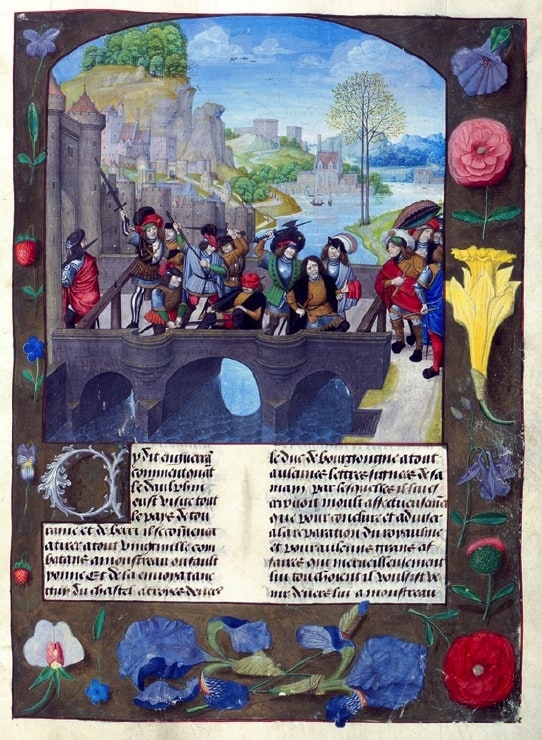
The series of French defeats in the course of the Lancastrian phase of the Hundred Years’ War led to the signing of the Treaty of Troyes in 1420 between Henry V of England and the new Duke of Burgundy, Philip the Good. Under the treaty, Henry V and his heirs would inherit the French throne upon the death of Charles VI of France, and the English king was to receive the hand of Princess Catherine. The agreement was undermined by the deaths of both Charles VI and Henry V in 1422.
The Hundred Years’ War
- The Hundred Years’ War was a series of conflicts from 1337 to 1453. It drew in many allies of the English House of Plantagenet against the French House of Valois over the right to rule the kingdom of France and the issue of sovereignty. The conflict spanned five generations of kings and two rival dynasties over the largest kingdom in Western Europe.
- The French origins of the English royal family had become the root of tensions between the French and English monarchies over the centuries since the Norman conquest of England.
- It was because English monarchs held much land and titles within France, which made them vassals to the kings of France. The French fiefs of the English monarchs were a major source of conflict.
- The size of English land ownership in France varied over the years, sometimes dwarfing that of French ownership.
- France would strip away land, wealth and titles from England where opportunity arose in order to keep the growth of England in check.
- In 1337, Edward III of England asserted his claim to the French throne in response to Philip VI of France’s confiscation of his French Duchy of Aquitaine.
- This marked the beginning of the first of the three phases of the Hundred Years’ War known as the Edwardian War which ensued from 1337 to 1360.
- The English emerged victorious in the battles of Crécy in 1346 and Poitiers in 1356. This was subsequently followed by the Treaty of Brétigny between the two kingdoms in 1360.
- The Caroline War, the second phase of the Hundred Years’ War, began in 1369 with Charles V of France declaring war against Edward the Black Prince.
- Campaigning and raiding started again. The conflict reached a stalemate in 1389, in which a truce was declared between Richard II of England and Charles VI of France.
- This was succeeded by more than two decades of peace between the two kingdoms.
- Peace was once again interrupted in 1415 when Henry V of England insisted on his right to the French throne. This marked the final phase of the Hundred Years’ War known as the Lancastrian War.
- Henry V had been involved in the events in France during his father’s reign, hence it was inevitable that when he became king, he himself would launch campaigns in France.
- In 1415, France was in a miserable condition and Henry V wanted to exploit this for his own advantage. He led his forces to Normandy and captured the port of Harfleur.
- The English victory at Agincourt in October 1415 boosted the national morale as well as strengthened the position of Henry V in his own kingdom, enforcing the legitimacy of the Lancastrian monarchy.
- Meanwhile, Charles VI of France descended into a bout of insanity on hearing the terrible news of the French losses and catastrophic defeat at Agincourt.
- The recently concluded battle was clearly a significant military blow to France and worsened its political crisis. Moreover, France’s lack of unity worked to Henry V’s advantage.
Campaigns of 1417-1420 and the Treaty of Troyes
- In 1417, Henry V launched another campaign against France. This time he prepared a larger and more efficient army alongside the improvement of the fortification of Harfleur in order to achieve permanent conquest. The king embarked from Southampton in July and landed in the neighbourhood of Harfleur.
- Henry V was able to take one fortress after another. After Caen fell into his hands, the towns in the district sent in their submission. He then began to hold his court at Caen.
- The success of his invasion of Lower Normandy relieved military pressure on Harfleur. The king then began to prepare for his next campaign, gathering all the troops that he could muster.
- Having received a reinforcement of 15,000 men in the spring of 1418, Henry V divided his army, one part struck Rouen, the other Cherbourg. Rouen was cut off from Paris and finally fell in January 1419. Those Norman French who had resisted were severely punished.
- Paris was now threatened, pushing the ruler of the capital, John the Fearless, Duke of Burgundy, to conclude a truce with Henry V.

Depiction of Henry V of England - However, the English king was determined to seize the territories set out to Edward III as accorded in the Treaty of Brétigny (1360), hence negotiations were broken off.
- The Dauphin Charles then sought a parley with Burgundy at the bridge across the Seine at Montereau.
- When the two met, the duke was assassinated with all his attendants in September 1419.
- The Dauphin was pointed out as the principal instigator of the assassination. This event would have catastrophic consequences for France, already greatly weakened by factional struggles and several defeats.
- Philip the Good, son of the murdered duke, succeeded his father. In order to avenge the death of his father, he formed an alliance with Henry V, which was finalised on 21 May 1420 and known as the Treaty of Troyes.
- What were the terms of the Treaty of Troyes?
- Henry V was to receive the hand of Princess Catherine, daughter of Charles VI of France.
- Henry V was made regent of France and acknowledged, along with his future sons, as successor to the French throne on the death of Charles VI.
- The Dauphin Charles was disinherited from the succession, based on the accusation of having ordered the assassination of the Duke of Burgundy.
- Whilst the legal basis of the treaty appeared to be questionable as only the French king himself would traditionally have the authority to make such an all-important decision, the condition of Charles VI during the period incapacitated him to enter into such an agreement. The treaty was ratified by the Estates-General later that year when Henry V formally entered Paris. Following the sealing of the treaty, the French nobility swore an oath of allegiance and the people of Troyes followed suit.
Outcomes of the Treaty
- As part of the Treaty of Troyes, Henry V married Catherine of France on 2 June 1420 at Troyes Cathedral. It is believed that the English king became enamoured with the French princess when they first met at Meulan. Their marriage was part of a plan to eventually place Henry V on the French throne and possibly end the Hundred Years’ War.
- Immediately after the treaty was concluded, Henry V was back in action in order to suppress opposition in France and to deal with several French civil disputes.
- After besieging Sens and other towns, Henry V travelled back to England with his new wife, who was crowned queen at Westminster Abbey on 23 February 1421.
- The Parliament of May 1421 was summoned, in which the treaty was accepted by the English nearly a year after its signing in Troyes.
- Following this ratification, Henry V had to return to campaigning in France in June. He remained there when his son, Henry, was born at Windsor Castle in December.
- The English king died in August 1422 and a few months later, Charles VI also died leaving the two crowns of England and France in the hands of Henry V’s 10-month-old son.
- Henry V’s only son was crowned as Henry VI of England and II of France.
- Meanwhile, the Dauphin Charles also claimed the French throne upon the death of his father but he ruled only a region of France centred on Bourges.
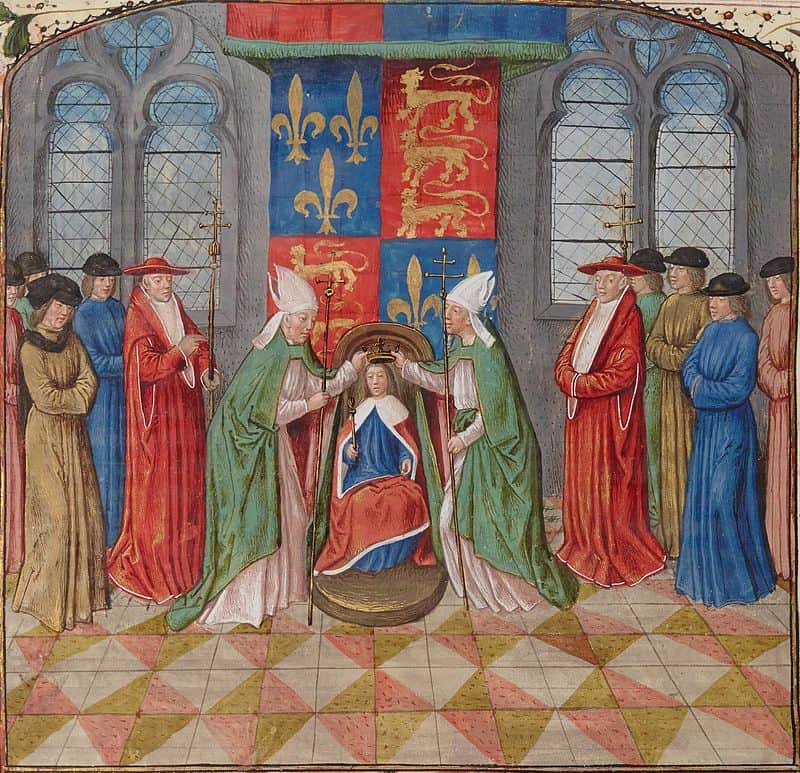
A depiction of Henry VI being crowned as king of France in 1431 - The Duke of Bedford continued the campaign in France against the Dauphin’ s supporters.
- In 1423, the terms of the Treaty of Troyes were reiterated in the Treaty of Amiens with Burgundy and Brittany confirming the recognition of Henry VI as King of France and agreeing to establish a triple-defensive alliance against the Dauphin Charles.
- In 1431, Henry VI was crowned king of France in the Notre-Dame de Paris cathedral. However, this symbolic ritual was without real substance.
- Despite the aggressive and surprise attacks of the English forces, English-held Paris and Rouen were soon recaptured by the French.
- The English-Burgundian alliance collapsed when Philip the Good of Burgundy joined Charles VII under the Treaty of Arras in 1435.
- In addition to Dieppe and Paris, the French also recaptured Harfleur by 1440 and parts of Normandy in 1449. Moreover, the French retook Formigny in 1450, Bordeaux in 1451, Gascony in 1452, and Castillon in 1453. At this time, the English were left with Calais.
- Through marriage alliances and military strategy of conquest, the French crown united the regions of Burgundy, Brittany and Provence. During this time, England was facing bankruptcy, civil war, and a weakening king.

